#Aircraft Ground Support Equipment
Explore tagged Tumblr posts
Text
Aircraft Ground Support Equipment Market Outlook from 2024 to 2034
The global aircraft ground support equipment market is projected to reach USD 9,351.7 million in 2024, with a compound annual growth rate (CAGR) of 7% expected over the forecast period from 2024 to 2034. By 2034, the market is anticipated to generate a revenue of USD 18,316.2 million, representing a 1.9x expansion in sales during this period.
Browse More! https://www.futuremarketinsights.com/reports/aircraft-ground-support-equipment-market
0 notes
Text
Aero Connect is a web-based aviation equipment marketplace that efficiently connects owners of available aircraft, engines and related equipment to end-users seeking to purchase or lease commercial aviation equipment
#engine stand#embraer 145#e190 aircraft#e170 aircraft#ge90 engine#cargo planes for sale#engine stand for sale#aerospace manufacturing company#atr-72 aircraft#aviation gear#aviation support equipment technician#aerospace components manufacturing#aviation ground support equipment#aviation equipment
1 note
·
View note
Text
🥀— 𝐚 𝐟𝐞𝐞𝐥 𝐰𝐢𝐭𝐡𝐨𝐮𝐭 𝐲𝐨𝐮 𝐡𝐚𝐬 𝐧𝐨 𝐩𝐮𝐫𝐩𝐨𝐬𝐞.

𝐩𝐚𝐢𝐫𝐢𝐧𝐠𝐬 : tsu’tey ✘ omaticaya!fem!reader
𝐰𝐚𝐫𝐧𝐢𝐧𝐠𝐬 / 𝐦𝐞𝐧𝐭𝐢𝐨𝐧𝐬 : ANGST, heavy angst, heavy dialogue (?) descriptions of blood, injuries, tsu’tey’s kuru is severed, tsu’tey’s death, stubbornness, crying, mild fluff —
𝐰𝐨𝐫𝐝 𝐜𝐨𝐮𝐧𝐭 : 3.4k+
𝐭𝐚𝐠𝐬 : @iwannabeapinkaesthetic @bridgechazlyn @nana-muffin @avatarloverfrfr @talanyra @dvxsja @ikeyniofthetayrangi @bambithewriter @iaoisiwqk
𝐝𝐢𝐯𝐢𝐝𝐞𝐫𝐬 𝐛𝐲 : @cafekitsune !!!
author’s note : I don’t know what to feel about this one LOL — Tsu’tey deserved the BETTER😭😭😭 I hope you like ! Sorry I’m advance as well — comments/reblogs are always appreciated <33

Right when it occurred, something did not feel right. There is an odd sensation stirring in the hollow of her stomach. It could not be the adrenaline that had taken its course within her body for she had anticipated it, nor could it be the minor, barely visible cuts created by the Sky Demons’ graze of foolish weaponry for while it burned only the slightest bit, it wasn’t extreme enough to draw pools of blood.
Grunts of an odd, internal wound left her yet she, with all her restraint, refused to acknowledge it right then and there and gently patted the side of her ikran for she too felt it, she too felt the distress, the slight yet sudden tear of something, of someone apart from her sole rider. Golden eyes waste no second in searching, mind voicing for her ikran to halt the strong, frenzied flaps of her wings.
She shuts out the sounds of the Sky demon’s flying equipment, the war cries the Na’vi created, and waits. Waits and observes, observes and listens, straining every one of her senses; frantic became her gaze as the feeling within her spiraled, harsh and swishing became Pandora’s winds as it surged through her limbs, aching swirled her heartbeat, lips whispering faint murmurs, longing for the presence, the call of him.
A pair of ears, belonging to the woman who would bound her life to him under the will of Eywa, hitched high and flickered at the agonized screech which sharply pierced through the air, coming from a specific aircraft until it soon began its descent down to Pandora’s ground. She wasted no second in trying to comprehend where, who the cry derived from, and the ears once chirped high faltered for a brief second as she picked it apart while panic, fear, the scorching pain corporeally and spiritually exceeded throughout her as she did.
Wretched. Agonizing. Appalling.
The cry which ripples from deep within Tsu'tey's lungs, clawing through the inward flesh until it reached the base of his throat and had been unleashed, is to be described as those precise words.
“Tsu’tey!”
Actions transpire before thoughts could be formed, her high chirp commanding her ikran to acutely glide down, right towards where the prolonged blue frame plummets down, the harsh ruffles of the branches due to her reckless speed being disregarded despite the gnashes they sliced across her striped flesh.
The churn spasms furthermore from the core of her being; burning, afflicting, and it is when she reaches him, the one bound to be her mate soon, her Tsu’tey lying on the grassed ground, that she is met with the dejected notion weighing upon her.
Despite the physical agony he is currently experiencing, he feels her — his serenity, the compliment to his being, the support and sustainment to his unbalanced character — close by. A palm clasps below his chest piece just to cover, to perhaps hide from her that he is hurt. His innards burn, gnaw, coil with each breath he tries taking. He coughs and despite the burn of it, he calls out to her.
“Y-yawnetu.” ( loved one )
“Ma Tsu’tey –”
Yet she is already rushing to him, descending onto her knees right beside him. She did not know where to begin. Act nearly transpired before thought once more, until she catches the way he holds himself. The pain submerged from not just him but her with each hurried step she had taken, each ragged breath she had taken, and so when her hand reached to touch just over his wounded chest, it became vivid, blistering.
A violent racketting envelops him entirely at the feel, a grunt spewing from his lips and it instantly makes her touch retract from him, hissing more so in distress at the notion of her mate being injured at the hands of them. Not even them, but guided by their coward minds and dastard hearts with what they called a gun.
Her mouth parches, her throat tightening as she tries to speak through her anger and pain. “T-tsap’alute si ( I apologize ). You are hurt, w-we have to get you to–”
His head created the smallest head shakes only for him to wince rather visibly, reaching for her hand. “Stay. T-touch –”
Hesitantly, she did as he said though she notices his discomfort and instead goes to cradle the upper curve of his head, but there’s slight space between for with the bit of strength he carries he uses to keep his head up.
The pressure of her palm rumbles a sound from his chest and she notices how his jaw narrows, how his ear winces. “Hurts?”
“T’s n-nothing. Fine, I’m fine.” He breathes in before his long fingers loosely wrap around her forearm, and his browline tugs down at the dry blood latching, the gnashes littering her skin. He, even in this situation, firmly states rather than questions: “You are hurt. T-they hurt you – did they–”
“I am fine, tiyawn. I am fine – my fault. I was rushing to come to you –”
His sharp eyes blaze and upper lip curls over his teeth as he hisses. “Must be more c-careful! Demons could have…have killed you. M-must think now more than ever —”
“ I will – but I am fine, I promise.” She assures and with her other hand she cradles his jaw, feeling it condense before trying to get him to calm down for she sees how agitated he became.
“Syeha si ( breathe ), Tsu’tey. Tsyeha si.” He exhales then tries to inhale only for the passage of his throat to obstruct with a gush of something; iron tang distastefully becoming one with his taste buds, the sudden swarm of liquid causing a choke-like sound to form at the back of his throat. Fearful, she wastes no time in moving the current hand on his head to the upper backside of his neck to slightly elevate him despite his strained protest.
“I— fine. I am fine–”
Her other hand leaves Tsu’tey’s cheek and goes to the base of her throat, right over the beaded necklace crafted by his very hands, the very blood stained hands that tear from his wound and reach for hers to stop her from acting. “ You are not fine! You are wounded, for Eywa’s sake! We must call for help—”
She watches how Tsu’tey tries to resist crumbling his features when her fingers brush up his neck, halting just right below the start of his kuru. He watches in anguish as the irises within her golden hues dilate, nearly becoming one with the other. She feels it undone, the braid, and with it undone, it is unprotected yet for whatever cause would it be? He feels the ghost of her touch over its bareness lurk down, and he grunts loudly as he shifts to stop her. “Ma yawnetu, please–”
But now the simple act of doing so becomes toilsome and painful, provoking an excruciating groan out of him and she’s haste in halting him from creating any more movement. “Ftang (stop).”
Tsu’tey is apprehensive, forming the weakest scowl as she gives him a pointed look. Perhaps it was because Tsu’tey was in her presence – the woman who succeeded to take his stoic mask off, to soothe the scowl constantly twisting his face. It was then that she found herself seeing him better then he saw himself – who he truly was, is, and bound to become. To her it was a must to be by his side, and to him it was an odd yet yearning-to-the-bone necessity to have her with him, to see her the way she sees him.
So with that, he releases a ragged breath but lets her and she resumes her act — not near enough to make contact with it, but near enough for him to feel it hovering. Enough for him to choke on a gasp and clutch onto her forearm when she reached the end which rested right by his side.
She too feels the sensation of it, of what he’s feeling in this second, of what he’s been feeling when he met the ground. She feels him, the one who's supposed to be her mate, experiencing the most indescribable pain there is for the Na’vi: the only true connection to the wonders within Pandora, to their Great Mother being torn off. To the one bound to be their mate for eternity.
The notion crashes down on her stronger, becoming sole with the ache stirring within. She says nothing for a long time and tries pushing through the muskiness enveloping her vision, wanting to take him in; colorants of yellow and ebony streaked boldly on the sides of his scalp, and she recalls being the one putting them there, she recalls how all the tension and worries seemed to have faded away from Tsu’tey when the lovely strokes of her paint-dipped fingertips specifically striped upon certain parts of his angular features as well, somewhat enhancing them and his azure tones – yet now the color scheme was assisted by blemishes and smudges of red, and the fierceness he once carried before this battle occurred vanished. This is an entirely different Tsu’tey that no other has ever witnessed — and if it weren’t for one of the reasons being that he was too damaged, too hurt and strained, she would have smiled softly down at him and bathe him in all the love and happiness there was within her because of him — one even she hasn’t witnessed — the closest ever being was when Sylwanin passed.
“Let me take you to Tsahik. You are Olo’eyktan. I-important and must stay alive, let me call for help so we can take you back –”
“I am far too injured for Tsahik to fix this. There is a battle happening at this moment, woman. We cannot let this interfere. They all need to fight for our People. Our home.” he grunts , nose scrunching at the raise of his tone. “And a demon weapon striked me…sa’nok died from it. Even if we try, it will be too late—”
“Toruk Makto will know what to do.” she quickly interjects. “He was one of them, h-he will save us. Will save you, ma Tsu’tey. He will not leave the People without their Olo’eyktan. H-he —”
“Then he will be the one to lead the People.”
He can’t fight the subtle twitch of his lip at how her ears perch at this, and she frowns deeply, just like he expected her too. She didn’t dislike Jakesully while she was wary of him at the beginning. Yet he earned trust, a rightful place among the Omaticaya. Even so, that place was not, isn’t, what Tsu’tey is suggesting.
“But he…y-you are Olo’eyktan. Our guidance, our leader.” she takes in a sharp breath and blinks rapidly as he stares up at her. “You…you are to b-be my mate. And I yours, yes?”
Purple splotched with the ebony striped beneath Tsu’tey’s eyes, pronouncing the anguish and disappointment lodged within his pupils, weighing down upon him. His lower lip quivers when he grabs his ruptured queue, and it takes everything in him to not yell.
He speaks through sputtered syllables. “I…I c-cannot ride again. Cannot be guided with the voice o-of Eywa. C-cannot lead the People and be strong Olo’eyktan because of this –”
The smallest whimper he made causes her to hold back her own, ears catching onto the way his breath hitched. He releases his hold on his queue and lets it falls back to his chest in order to apply pressure to evict the constant drain of blood even though at this point it is inevitable. His other hand tries to grasp onto something, anything to sustain himself. She is quick to grab it, guiding it towards her, right above the part he painted over — fingers dipped in turquoise-colored paint at the beginning yet now taints with the boldness of crimson, the length of his fingers curling from the curve of her shoulder while his palm had pressed above the front of her chest right near her heartbeat, the closest thing he was to ever feeling.
He finds grounding, he finds the guidance of her heartbeat, of her touch but it isn’t nor will it ever be like how it’s supposed to. Inhaling through flared nostrils, as if preparing to say the words he wished so desperately to not be true, he utters the words that unfortunately confirmed her very thoughts:
“But overall…I-I will not be able to form tsaheylu with you, yawnetu. You will not have a true mate. A-and I will no be able to feel you…to truly have you under the will of our Great Mother.”
It was effortless to push away the wretched feeling ripping inside of her — but stubbornness is almost as if it is one with her. Something Tsu’tey both adored and despised at times – and in this case, he isn’t exactly certain which he feels right now.
A sob heaves from her chest, feeling so utterly pathetic when tears continue welling in her eyes. “K-kehe ( no ). You have always had me — no matter tsaheylu. You’ve felt, known and seen me, ma Tsu’tey. I feel, know and see you then and now. Please let me continue — let us go—”
“Oeru yawne ( my love )…” The expanse of his palm slides up to her neck, gently enveloping her drenched cheek and weakly frowns at how he’s grimming her beautiful face with his own blood. It is too much; the raw truth of it all, the rasped breath of his tender words, the quivers of his palm due to his pain, tears cascading from her eyes and coating her cheeks, him giving the mantle to someone else and accepting it, the sinking fact that the first and only thing she can and will ever solely, truly feel from Tsu’tey, the man who she’s chosen to be with for the rest of her life as he has chosen her with no hesitation, was him hurting, him processing it with the same pace as she is.
He says nothing for a second, simply letting himself scrutinize and adore her and gather his words. “It is worse to go through this life without purpose than to die. A-a feel without you, oeyä yawne, has no purpose.”
“And a life without you has no purpose!” Her voice grows harsher, words broken. “Is that what you want to do to me, hm? Leave me with no purpose?”
“You will have the People—”
“It isn’t the same! A-and so will you if you choose to see the light of this—”
“Ma Y/N.” It isn’t firm, his tone when saying her name. But it is enough for her to stay quiet, ears flattening at the sides of her head.
“Me…just being me will not suffice for the People. And while I am more than happy to know that it is sufficient for you… it is not for me.” The octave of his voice is tremulous, barely audible to ears as he peers up at her. “Not when knowing I cannot satisfy those around me — it will not be enough from my part…for them. For you. Especially with everything you have given me.” He gives her one of his truest smiles despite the red that now streams out the corners, coughing afterwards.
The pad of her thumb swats the blood away, knowing what he was doing with his words. She badly wants to frown at him, to tell him it is not the time to be smiling but she can’t help the pure allure she has to his lovely expression. She can’t help herself from tilting her head and questioning, “What have I given to you?”
“Patience. Peace.” His eyes close a second as he sighs. “Even through grief, through loss and chaos, you chose me. It is as you say; you’ve felt and have known and seen me. While my mind was to be dutiful to the People…my heart was purposeful to you.”
Nuzzling into her touch, he breathes out, “and now I accept this — because I’m in the presence of you. It is…a bit more peaceful.”
“Y-you skxawng.” she chokes out for she doesn’t know what to say and instead lets her forehead shadow over his as he chuckles. But he feels it, feels what’s channeling from her mind, heart, soul, and it’s enough to bring him much more tranquil.
The bleeding from his chest does not stop, but at this point he doesn’t care anymore. Instead, he removes his hand from the spot and loosely curls around the hand that has not left its spot from his cheek. Fingers tenderly knead the flesh of her wrist while the other still cups her face, thumb stroking the apple of her cheek. Eyes taking her in, the sensations she now only faintly ignites within him, and he groans lowly at how those blazing, loving emotions clash with the shock that is coming together. The reality, the acceptance of not being the one to guide the People, of not giving her the future she truly deserves, the acceptance of it all.
She doesn’t want to accept it however. Not now, not yet. So all she can do is nod, swallowing through the lump within her throat and let’s herself softly touch him; the fading specks across his nose, the beautiful markings of his forehead, the sharpness of his cheeks, the quiver of his lip as he inhales curtly, eyes closing for a solid moment. It is ridiculously unbearable now, pain pulsating in sharp waves through his body.
“Hurts?” She tries evading her gaze from the red spiraling down his blue skin, from his severed kuru. He shakes his head and lets his hold press a bit more against her. “No more…fine. I’m fine.” he gently coaxes his lie with a subtle twitch of his mouth, wanting to reprieve her from feeling any more anguish for him.
“That — that is good.” she returns his expression, professing her own belief in his words to spare him his strength in trying to console her. But how he slightly hears it in the way her breathing becomes frantic when his own starts to falter. The extent of his wounds are as he said; too great and severe for Tsahik to cure, and the heart's wrenching notion that he’s near his end slowly starts to seep past her obstinacy.
Faint cries of what seemed to be cheers chime through the sky, and he can’t resist the sigh of relief that emerges. “That is a good sign. Very good.”
She nods but doesn’t tear her attention from him. She watches how his bright orbs shift beneath his shut eyelids. When they come to view again, there is slight agitation. More ache accompanied by sorrow, all of it spreading from the core of his being. “Yawnetu.”
Her tail lashes in fret. “I am here, Tsu’tey — what is wrong?”
“C-call to them…it is almost time.” His words stammer violently, grasping much more onto her when he gasps. Her coils furiously shake across her shoulders, nose scrunching, lower lip trembling when she sobs. “not yet…n-no not yet. I cannot lose you! P-please—”
“My stubborn girl,” he grunts quietly when his red stained mouth manage to smile. “You will never lose me. I…I am more than certain we will see one another again. But now the People, Toruk Makto must know he is to lead them. And I need you to help me let him know.”
She desperately nestles her cheek against his hand for a moment, sniffles and nods before craning her neck forward and placing a light kiss over his forehead. “W-whatever you wish, tiyawn.”
She does what she is told while he listens, the voice of Jakesully being heard, wasting no second in confirming he is on his way with the others.
Feathered kisses are met with his temple now and across his forehead, his eyelids, his nose, his cheeks — but lastly his lips. Not caring for the blood tainting them, only for the sensation they soothe her soul with, she gives him one last broken kiss.
She focuses entirely on Tsu’tey, respite emerging deep from within his lungs while desperately trying to give him one of her breaths as if it’ll spare him, tender fingertips grasping his face in an anguish manner as he too tries meeting her halfway.
The hand on her cheek goes back to her shoulder, gently pulling her closer. Her thumbs brush down his cheeks, outlining the structure of his jawline. “I feel you. I see you, oeyä Tsu’tey.”
The tip of his nose nudges her when his forehead finds its place over hers. “I feel you. I…I see you, oeyä Y/N.”
Those are the words he finds himself mouthing to her one last time, the only pair of brilliant, loving tearful eyes that he sees, the last swarm of peace that wavers with Toruk Makto’s shadow as it envelops his dying body.
#avatar#avatar james cameron#tsu’tey te rangloa ateyitan#tsutey x reader#tsu'tey te rongloa ateyitan#tsu’tey avatar#tsu’tey x reader#tsu'tey x reader#tsu’tey fanfic#tsu’tey fluff#Tsu’tey angst#Tsu’tey x omaticaya!reader#avatar the way of water#jake sully#Neytiri
228 notes
·
View notes
Text

The F/A-18 Super Hornet is a versatile, carrier-based fighter and attack aircraft developed by Boeing for the United States Navy. It serves as the successor to the original F/A-18 Hornet and incorporates significant upgrades and enhancements in performance, range, and payload capabilities.
Introduced in the late 1990s, the Super Hornet was designed to address the evolving challenges of modern warfare, offering improved mission flexibility and endurance compared to its predecessor. It features a larger airframe, more powerful engines (General Electric F414), and advanced avionics systems.
One of the standout features of the F/A-18 Super Hornet is its ability to perform a wide range of missions, hence the designation "F/A" which stands for Fighter/Attack. It can conduct air superiority missions, ground attack, close air support, and reconnaissance missions with equal proficiency. This versatility is enhanced by its conformal fuel tanks and additional underwing hardpoints, allowing for increased fuel capacity and a greater payload of weapons and sensors.
The Super Hornet is equipped with the APG-79 AESA radar, which provides enhanced situational awareness and targeting capabilities. It also features advanced electronic warfare systems and the ability to network with other aircraft and ground units, contributing to its effectiveness in joint operations.
In combat, the F/A-18 Super Hornet is armed with a variety of air-to-air and air-to-ground weapons, including AIM-9 Sidewinder and AIM-120 AMRAAM missiles for air combat, and a range of precision-guided bombs, missiles, and rockets for ground attack missions.
Over the years, the Super Hornet has been continuously upgraded with new technologies to maintain its edge in modern aerial warfare. Variants such as the EA-18G Growler, which specializes in electronic warfare, further demonstrate its adaptability and role in supporting combat operations.
The F/A-18 Super Hornet has been widely exported and is operated by several other countries, further underscoring its reputation as a reliable and capable multirole fighter. Its ongoing service and adaptability ensure that it will remain a cornerstone of naval aviation for years to come.
107 notes
·
View notes
Text
CLASSIFIED OPERATION SUMMARY
DRC, Planning & Evaluation Office, Logistics & Infrastructure Division
Date Initiated: [REDACTED]
From: Assistant Director [REDACTED], Logistics & Infrastructure Division
To: Director [REDACTED]
Subject: Operation Overdue
Background
Paternity Compound 110 exceeded maximum capacity due to an influx of high-multiparity surrogates and operational delays due to the ongoing [REDACTED] in the Philadelphia metropolitan area. Overcrowding led to strained medical staff and diminished care standards.
Operation Overdue was launched to mitigate these risks. It was a cross-country air transport initiative intended to distribute surrogates to Paternity Compound 133 in Portland, far below occupancy capacity. This initiative required covert execution to avoid public attention and ensure all surrogates reached their destination intact.
Paternity Compound 110 (Philadelphia)
Paternity Compound 110 is an aging and overcrowded facility located in a repurposed commercial structure in Philadelphia. Designed to house a maximum of [REDACTED] surrogates, it currently holds over [REDACTED] (20% over capacity), leading to severe resource strain and cramped conditions. Despite its deteriorating infrastructure, the compound remains operational due to its proximity to a high-fertility urban population, ensuring a steady influx of conscripts.
Paternity Compound 133 (Portland)
Paternity Compound 133 is a modern, state-of-the-art facility in a remote area outside Portland. It is designed to accommodate up to 1,000 surrogates and boasts cutting-edge medical technology and advanced monitoring systems. However, its location in a region with a lower urban population has led to concerns about underutilization, with only a sporadic influx of conscripts to fill its capacity.
Transport Details
Stage 1: Ground Transfer
Surrogates were loaded into climate-controlled transport vehicles with hydraulic lifts to accommodate limited mobility.
Vehicles were disguised as commercial cargo containers to minimize civilian interference.
Stage 2: Cross-Country Airlift
[REDACTED] cargo planes were requisitioned from [REDACTED] for the operation. Each aircraft was retrofitted with cushioned flat beds, oxygen units, and onboard medical stations.
Medical personnel monitored surrogates for complications, administering sedatives to those exhibiting distress or restlessness.
“Flying cargo is one thing. Flying this cargo? Another beast entirely. I could hear the medical staff scrambling in the back every time we hit turbulence. It wasn’t until we touched down that I realized how close we came to disaster.” - [REDACTED], Pilot
Stage 3: Arrival & Integration at Compound 133
Surrogates were offloaded and delivered to their assigned wards, where medical personnel assessed their condition.
Immediate hormonal stabilizers were administered to counteract the physical strain caused by altitude changes and prolonged immobility.
Mobility & Transport Constraints
Issue
Many surrogates, especially those late term (+25 days), were unable to walk or sit upright due to the size and weight of their pregnancies. The average weight of surrogates and supporting equipment was over [REDACTED] lbs, +300 lbs average surrogate weight, 489 lbs max weight transported.
Solution
Specialized equipment, such as reinforced stretchers, forklifts for heavier surrogates, and bariatric wheelchairs, was employed to move surrogates from Compound 110 onto the planes. Stretchers were secured in a palletized format inside the aircraft to maximize space.
“The forklift crew had a hell of a time loading the bigger ones. You’d think they were moving industrial machinery, not people. One was so massive they had to be rolled onto the stretcher like a beached whale. It wasn’t pretty.” - Anonymous Ground Technician
Issue
While the standard [REDACTED]-type plane has a cargo capacity of approximately [REDACTED] lbs and an internal volume of [REDACTED] cubic feet, the vehicles needed retrofitting to accommodate the unique needs of heavily pregnant surrogates. This included safety measures for turbulence and environmental controls to maintain appropriate temperature and pressure levels.
Solution
The [REDACTED]-class plane could transport [REDACTED] surrogates per flight with DRC modifications.
Planes were equipped with mobile dividers so that if surrogates suffered complications, they could be rapidly isolated from view for treatment or birth. Climate control systems were enhanced to maintain a stable environment and portable restroom facilities were added for staff use (surrogates were catheterized to avoid the need for movement).
“They told me this was for my own good, but I can barely breathe in here. Every bump in the air made it feel like my belly was going to burst. I just want this to end—I don’t care where we’re going.” - Surrogate S110-523-Q
Key Incidents
Mid-Transport Medical Emergency
During the flight, Surrogate S110-399-Q, pregnant with septendecuplets (17), began exhibiting severe respiratory distress. Initial symptoms included difficulty breathing, chest tightness, and visible [REDACTED]. Onboard medical personnel swiftly administered oxygen and sedatives to stabilize, but within minutes, signs of early labor emerged, prompting the emergency medical team to prepare for an in-flight delivery.
The medical team worked tirelessly to assist the surrogate as he delivered all 17 fetuses before arrival in Portland. Each newborn was immediately evaluated for viability and determined to be stable. As expected, the surrogate's vital signs rapidly declined following the final birth, and he succumbed to [REDACTED] failure.
"I’ve never seen anyone that big in my life. I couldn’t stop staring. His belly was so massive it looked like it was about to split open. When he started struggling to breathe, the medical staff was all over him, but the sounds he made… it was like he was suffocating under his own weight..." - Surrogate S110-403-I, Observed Situation
Public Visibility Concerns
Several bystanders filmed the convoy and uploaded clips online during the ground transfer stage. DRC Cyber Security immediately intervened, scrubbing social media platforms and issuing cease-and-desist orders to content creators.
Surrogate Stuck in Chair
One surrogate, pregnant with octodecuplets (18), experienced significant growth during the flight, reportedly due to hormonal surges and fluid retention. Upon landing, the crew discovered that the surrogate had become physically wedged in his reinforced seat due to his expanded abdomen and swollen extremities. Extraction required the partial disassembly of the seat and the use of specialized equipment to free him.
“I wasn’t even surprised anymore. His belly was literally spilling over the armrests. That’s when you realize these missions aren’t just logistical—they’re borderline impossible.” - Anonymous Transport Specialist
Behavioral Issues
Three surrogates attempted to resist boarding at Paternity Compound 110, citing fears about the unknown destination and poor treatment. They were sedated on-site and securely transported.
Post-Operation Notes
Total Surrogates Transported: [REDACTED]
Surrogates Expired En Route: [REDACTED]
Fetuses Delivered During Operation: [REDACTED]
While operational challenges were anticipated, the results align with DRC efficiency standards. The use of modified cargo planes and specialized medical protocols ensured the safe delivery of most surrogates despite several complications during transit.
Additional safeguards are required to manage the physical strain of long-term pregnancy during extended transport. Enhancing hormonal regulation pre-flight may mitigate extreme growth events.
Stronger sedation measures, particularly during boarding, will reduce incidents of resistance and streamline pre-departure logistics.
Transport plans must minimize exposure to the public. Future operations should prioritize routes and timing to limit interaction with civilian populations.
Conclusion
Operation Overdue underscores the complexities of large-scale surrogate relocation efforts and demonstrates the DRC’s capacity to execute such operations precisely and adaptively. Lessons learned during this mission will inform future strategies, ensuring the continued success of critical population sustainability initiatives.
----------------
Click Here to return to DRC Report Archives

#mpreg#mpregkink#malepregnancy#mpregbelly#pregnantman#mpregmorph#mpregcaption#mpregstory#mpregbirth#mpregart#mpregnancy#aimpreg#mpregroleplay#malepregnant#caucasianmpreg
40 notes
·
View notes
Text

F-15D Eagle Spotted with Unusual Infrared Measurement Pod
Stefano D'Urso
F-15D IR pod
The pod appears to be previously unseen but closely resembles the Airborne Turret Infrared Measurement System III (ATIMS III), which is used to perform airborne IR signature measurements.
A U.S. Air Force F-15D has been recently spotted flying in a very unusual configuration, usually seen only for very specific tests. In fact, the aircraft was carrying on its station #2, instead of the usual external fuel tank, what appears to be a large InfraRed pod.
The pod appears to be previously unseen but closely resembles the Airborne Turret Infrared Measurement System III (ATIMS III), which is used to perform airborne IR signature measurements.The IR-measuring podsATIMS IIIThe other pods
The photos, kindly shared with us by aviation photographer @arizona_planespotter, shows the aircraft, sporting the markings of the 144th Fighter Wing from Fresno Air National Guard Base, California, taking off from Morris ANGB in Tucson, Arizona, together with an F-15C. The two fighters apparently took part in a mission with local F-16s.
Upon closer inspection, the single-seater Eagle appears to be aircraft 83-0026, which sports on its tail the markings of the Air National Guard/Air Force Reserve Test Center. The unit is based at Morris ANGB and primarily supports F-16 operational flight program (OFP) testing, although it is tasked also with testing of other aircraft.
The large pod, which is half the length of the F-15’s external fuel tank, appears to be equipped with a ball sensor turret in the front. While some argued this might be a prototype of a directed energy weapon, the most plausible identification is an infrared measurement pod which is usually carried by twin-seater F-15Ds.

The F-15D with the unknown pod takes off from Morris ANGB. (Image credit: @arizona_planespotter)
In fact, the OT- and ET-marked aircraft are able to employ a range of highly specialized pods to accurately measure infrared signatures while airborne. This capability is usually employed during the development of IR seekers or sensors, as well as IR countermeasures.
We reviewed the available imagery of the known pod, but we were not able to find a 100% match, given the nature of these pods. While the unknown pod shares similarities with the SARIS and SATIRS pods, the closest match is the ATIMS III pod, although there are some differences.
The overall shape and dimensions of the two pods appear to be the same, however there are some differences in the sensor turret and some fairings on the body of the pod. We should note that the most recent info about the pod dates back to 2020, so we cannot exclude the possibility of a newer variant.
The IR-measuring pods
According to The War Zone, which published in 2020 an in-depth report about the unusual pods, both the Air Force and Navy use these specialized pods. While the Navy’s pods, usually seen on twin-seater F/A-18s, are also used by F-15Ds, the Air Force’s ones appear to be exclusive to the F-15D.
The choice of the F/A-18 and F-15 is due to their ability to carry large and heavy loads. The latter has been particularly used throughout the years to carry outsized loads during testing and operational missions.
At the time of the 2020 report, Naval Air Systems Command (NAVAIR) maintained two podded systems, the Airborne Turret Infrared Measurement System III (ATIMS III) and the Threat Infrared Generic Emulation Radiometer (TIGER). Four more pods are available for the Air Force, with 96th Test Wing employing the Beam Approach Seeker Evaluation System (BASES), the Calibrated IR/visible/UV Ground and Airborne Radiometric Spectrometer (CIGARS), the Supersonic Airborne Tri-Gimbal Infrared System (SATIRS), and the Spectral/Spatial Airborne Radiometric Infrared System (SARIS).

The ATIMS III pod (top) and the unknown pod (bottom). (Image credit: The Aviationist using photos by Brian Lockett/Goleta Air And Space Museum and @arizona_planespotter)
ATIMS III
ATIMS III has been defined in 2020 as the latest generation of a system that dates back to at least the 1970s. The system was originally integrated aboard the A-3 Skywarrior, before being later developed into a podded variant, the ATIMS II, employed by the F-4 Phantom II.
The system, which allowed greater flexibility and more ease of use compared to the original one, had an articulating turret with various cameras and sensors installed that a single operator could point at the desired target. Today’s ATIMS III was acquired in the 1980s and offers even greater capability.
The pod’s sensor turret can hold up to four different infrared seeker types at once. The system is also equipped with one middle wavelength infrared (MWIR) imager and three visual spectrum video cameras, as well as a laser rangefinder. This allows to collect a multitude of data from multiple sensors at the same time.
The available photos show that the pod can be installed either with the turret facing forward or facing backwards, depending on the test’s requirements. TWZ reported that the pod’s design is highly modular and adaptable and features a digital data recording system.
The report included a mention of a statement from Ampex Data Systems Corporation which provided solid-state recorders to capture the full spectrum of infrared data measured by the pod as part of an upgrade program. According to the statement, which uses the alternate Airborne Infrared Countermeasure Evaluation System (AICES) name, the pod can possibly transmit collected data to the ground via datalink.

The F-15s returning to Morris ANGB. (Image credit: @arizona_planespotter)
The other pods
The second pod operated by the Navy is the Threat Infrared Generic Emulation Radiometer (TIGER), which is designed for more general aerial infrared signature measurement of fixed-wing and rotary-wing aircraft, as well as decoy flares. TIGER carries three MWIR cameras and a long-wavelength infrared (LWIR) camera, in addition to a separate infrared tracking camera and an MWIR spectrometer, along with three visual spectrum video cameras and a laser rangefinder.
TWZ reported that the spectrometer allows to verify how the infrared radiation from the test subjects interacts with the surrounding environment, enabling the pod to gather data on an object’s temperature, how that heat is distributed and how the resulting infrared signature might fluctuate under different environmental conditions and at extended distances.
Similarly to ATIMS III, the pod can be carried with the turret either facing forward or backwards. TIGER is usually seen on F/A-18s, however there are instances when it was employed by F-15s, sometimes together with ATIMS III in the same flight.
Another pod is the Spectral/Spatial Airborne Radiometric Infrared System (SARIS), focused on infrared spectroscopy. More specifically, a scientific article published online mentions that SARIS uses an Imaging Fourier Transform Spectrometer (IFTS), which permits the determination of the surface temperatures of distant objects and, combined with imaging capability, allows rapid temperature mapping.
The document says that SARIS, first delivered to Eglin AFB in 2003, is used to characterize infrared targets, such as aircraft, missiles and flares, from the air. The pod is equipped with a co-registered, high-definition infrared camera and two internal blackbody sources for performing in-flight radio-metric calibration.
There are limited freely available details about the BASES, CIGARS, and SATIRS pods, but they are understood to have general capabilities very similar to those of ATIMS III and TIGER.
Thanks again to @arizona_planespotter for the photos he sent us! Make sure to follow him on Instagram for more!
@The Aviationist.com
22 notes
·
View notes
Text

1940 05 Westland Lysander MkIII - box art Italeri
The Westland Lysander was a short take off and landing (STOL) aircraft that was initially employed in the forward observer/artillery spotter/army cooperation role. It would later provide air support for what would subsequently be called covert operations in Occupied Europe. It first flew on June 15, 1936 and was a factor in the post-war development of a STOL requirement by the world’s major air forces. Entering service with the Royal Air Force in June 1938, its design was significantly influenced by the German Henschel Hs 126, a similar aircraft in the Luftwaffe inventory. The Lysander was fully operational with No. 16 (Army Co-operation) Squadron at the time of the Munich Crisis in September 1938, and began the R.A.F’s process of phasing out its then designated artillery spotter aircraft, the Hawker Hector bi-plane.By the time war broke out a year later, it was in service with seven squadrons, six of which deployed to France in the first months of the war (Nos. 2, 4, 13, 26, 613 and 614). When hostilities in the West began in earnest in May 1940 with Germany’s invasion of France and the Low Countries, Lysanders began reconnaisance and artillery spotting operations, with Nos. 2 and 4 Squadrons re-deploying to Belgium.On occasion, Lysanders gave a surprisingly good account of themselves when pitted against state-of-the-art German fighters. In one action, a group of Lysanders was attacked by six Messerschmitt Bf 110s over Belgium, and the rear gunner of one of them, L.A.C. Gillham, shot down one of the 110’s, before his pilot could escape at low level. In the coming weeks, Lysanders were frequently set upon by Bf 109’s, particularly when unescorted by their own fighters. While not fast, they were highly manueverable; if they were lucky, they would escape with mere battle damage. But between May 10 and May 23, 1940, nine crews and 11 aircraft were lost to enemy action. On the 25th still more were caught on the ground in a strafing attack at Clairmarais and destroyed.By the time of the Dunkirk evacuation, the Lysander squadrons had been decimated, having virtually no serviceable aircraft. Often their crews flew against intimidating odds, being called upon to air drop supplies without fighter escort to British or French troops, or provide ground support with their loads of 40 lb. bombs, all in skies increasingly dominated by the Luftwaffe. They inflicted damage along the way; on May 22 Flying Officer Dodge shot down a Henschel Hs 126 with his forward machine guns, while his rear gunner downed a Junkers Ju 87 Stuka. But this was the exception. Of 174 aircraft deployed to France, 88 were lost in air combat and 30 more destroyed on the ground by the time the French capitulated.
After Dunkirk, contemplating a loss rate of 63 percent, the RAF had little choice but to withdraw the Lysander from front line service — at least for daytime operations. The Lysander would go on to its greatest fame as the aircraft of choice for Special Operations Executive, a covert auxiliary of (and competitor to) the British Secret Intelligence Service (SIS), charged by Winston Churchill with covert operations in the Occupied Countries and a mandate to “set Europe ablaze.” Soon, on a regular basis, Lysanders of No. 138 Squadron (Special Duties), painted matt black, inserted agents and their weapons, ammunition, explosives and other supplies, and withdrew shot-down airmen. Sometimes they withdrew people wanted by the Gestapo, or brought Resistance leaders back to London for briefings. Lysanders would later be used by both the British Commandos and the American Office of Strategic Services on similar operations in Europe and the Far East.
Landing in unprepared clearings or meadows at night, the landing ground identified by small torches lit by members of the Resistance, Lysanders helped sustain hope in Occupied Europe and Asia. By 1942 they were equipped with larger fuel tanks (starting with the Mk. IIIa) to allow penetration deeper into France, and their ladders touched up with flourescent paint to allow quicker ingress and egress from the plane. There was constant danger – one on occasion, a Lysander guided to a landing by torches touched down, only to be met by German machine gun fire. The pilot, Squadron Leader Conroy, slammed the throttle open and struggled to get airborne, stemming the blood from a neck wound by clamping his hand over it. Brushing the treetops at the edge of the landing field, he managed to return safely to England.
In the Middle East, Lysanders were able to operate longer in their original roles of artillery spotting and reconnaisance since Axis fighter aircraft were not as readily available. In Palestine, they flew throughout 1940 doing aerial blackout inspections, coastal watch, and general co-operation with the Palestine Police. In North Africa, No. 6 Squadron was deployed to Libya and was ordered to remain in Tobruk when the British retreated from Rommel’s Afrika Korps, providing close air support over the beseiged garrison, which continued to hold out. During the war, Lysanders were operated by Britain, France, Ireland, Canada, Finland, Egypt, and South Africa. By war’s end they were a rarity, except in Canada, where relatively large numbers of them persisted until the 1950’s.
36 notes
·
View notes
Text

The LHD-3 USS Kearsarge (LHD-3) is a Wasp-class amphibious assault ship that serves in the United States Navy. Here's a brief overview:
* Commissioned: June 2, 1993
* Length: 844 feet (257.5 meters)
* Beam: 106 feet (32.3 meters)
* Draft: 27 feet (8.2 meters)
* Displacement: 40,000 tons (full load)
* Speed: 22 knots (25.6 mph)
* Range: 6,000 nautical miles (11,110 km)
* Crew: Approximately 1,000 personnel
* Aircraft capacity: Can carry up to 20 helicopters, including CH-53E Super Stallion, CH-46 Sea Knight, and UH-1Y Venom
* Amphibious vehicles: Can carry up to 1,500 personnel, including Marines, and their equipment
The USS Kearsarge is a multi-mission ship designed to support amphibious operations, including:
1. Amphibious assaults: The ship can carry a large number of Marines and their equipment, and can deploy them onto the beach using landing craft or helicopters.
2. Air support: The ship can carry a large number of helicopters, which can be used for transport, reconnaissance, or attack missions.
3. Medical support: The ship has a hospital with advanced medical facilities and can provide medical support to troops in the field.
4. Command and control: The ship can serve as a command center for amphibious forces, providing command and control capabilities for ground and air operations.
The USS Kearsarge has deployed to numerous regions around the world, including the Middle East, Africa, and Asia. It has also participated in several humanitarian missions and disaster relief efforts.
The USS Kearsarge is one of the largest warships in the world and is an important part of the US Navy's amphibious fleet.
36 notes
·
View notes
Text

Does an A-10 really have a "titanium tub" for the pilot to sit in? What kind of hit can it actually take? Can it take a .50 cal explosive or armor piercing round?
The A-10 is equipped with a titanium tub – a sort of armored cocoon that envelops the pilot for protection. This feature is officially referred to as the bathtub and is a testament to the aircraft's design, which prioritizes pilot survivability above all else.
The bathtub is crafted from titanium armor and is specifically designed to withstand significant impacts, including direct hits from up to 23 mm cannon fire. It's also capable of enduring single strikes from projectiles as large as 57 mm rounds. The robustness of this titanium shield is so remarkable that it accounts for about 6 percent of the A-10's total weight, weighing in at a hefty 1,200 pounds.
It can take a hit from a .50 caliber explosive or armor-piercing round, the bathtub's resilience is such that it can indeed withstand rounds of that caliber. The Warthog's cockpit glass is also bulletproof, capable of withstanding up to a 23 mm projectile, which covers the .50 cal rounds you're curious about. This level of protection is crucial, given the A-10's role in close air support missions, where it often flies low and becomes vulnerable to ground fire.
The A-10's durability doesn't stop at the bathtub. The entire aircraft is built to survive. It features redundant flight systems, self-sealing fuel tanks, and a structure that allows it to return home even after sustaining considerable damage. This ruggedness has earned the A-10 a legendary status among military aircraft for its ability to take a hit and keep flying.
The A-10 Warthog is a flying fortress, designed to bring its pilot home safely from the most perilous situations. The titanium tub is just one of the many features that make the A-10 a true survivor in the skies.
47 notes
·
View notes
Text
Last week, Syrian rebels led by the Sunni Islamist group Hayat Tahrir al-Sham (HTS) launched a surprise offensive, capturing significant parts of Aleppo, one of Syria’s largest cities, and advancing south into Hama province. This offensive—the most substantial territorial gain by rebel forces in nearly a decade—struck at the heart of what Russia once considered its defining achievement in Syria: the 2016 recapture of Aleppo.
In December 2016, Russian airpower, in coordination with Iranian-backed forces and the Syrian army, retook the city in an operation that demonstrated Moscow’s military effectiveness and cemented its role as the decisive external actor in Syria, overshadowing other actors such as the United States, which focused narrowly on countering the Islamic State, and Turkey, which was preoccupied with containing Kurdish forces near its border with Syria. The loss of Aleppo thus represents not just a military setback but a symbolic challenge to Russia’s claim of being able to decisively shape Syria’s future.
For Russia, the loss of regime control in Aleppo reveals deeper vulnerabilities in its Syrian strategy. The degradation of key ground forces such as Hezbollah—exacerbated by Israeli strikes against their commanders, forces, and logistics in Lebanon and Syria in recent months—and the endemic weakness of the Syrian army have created military gaps that Moscow has struggled to fill due to its primarily aerial deployment in Syria.
While Russia’s airpower in Syria remains relatively consistent with its 2018 levels, the redeployment of some ground forces in the past two years to secure strategic locations such as Tartus and Latakia has reduced its flexibility to address new threats effectively. Yet with established regional influence and significant military investments at stake, Russia cannot afford to retreat from Syria despite these mounting challenges. The naval base in Tartus secures Russia’s access to the Mediterranean, a critical geostrategic asset, while the Khmeimim air base near Latakia enables Moscow to project power across the region and maintain its role as a key player in Syria and beyond.
Russia’s response to the rebel offensive revealed significant operational constraints. When HTS first struck Aleppo, the speed and surprise of the advance left Moscow little time to organize effective air support. Though not lacking in air capacity, Russia struggled with the practical challenge of rapidly generating enough sorties to counter such a large-scale offensive. By the time rebels approached Hama, Russian forces managed to mount a more coordinated air campaign, with Russian and Syrian aircraft striking rebel positions across Hama, Aleppo, and Idlib. Russian sources claimed these strikes killed HTS leader Abu Mohammad al-Julani, though this remains unverified.
The offensive also exposed embarrassing weaknesses in the Assad regime’s defenses. At Kuweires air base near Aleppo, Syrian forces reportedly surrendered without resistance, allowing HTS to capture significant military assets. The seized equipment included a Mi-8 helicopter, an L-39 combat training aircraft, and reportedly an S-200 anti-aircraft missile system, along with Strela-10 and Pantsir-S1 air defense systems. Even more concerning was the fall of al-Safira, one of the regime’s largest military-industrial complexes and a critical defense manufacturing center.
The rebel advance toward Hama now threatens Russia’s strategic position in Syria. If HTS takes Hama, it could isolate the coastal provinces, as the city of Hama lies about 50 miles from Tartus and serves as a key junction connecting the interior to the Mediterranean coast. Meanwhile, a push to the city of Homs, roughly 75 miles from Latakia and 50 miles from Tartus, would sever the land link to Russia’s Mediterranean bases at Latakia and Tartus from its limited forces in central and eastern Syria.
This geographic separation would severely hamper Russia’s ability to coordinate operations across Syria. The situation could deteriorate further if dormant rebel cells in the south reactivate, potentially fragmenting regime territory and straining Russia’s already limited military presence. Russia maintains a presence in southern Syria, particularly in Quneitra and Daraa provinces near the Israeli-occupied Golan Heights, where it has established military police observation posts to monitor cease-fires and regional tensions.
Beyond immediate military concerns, these developments expose Moscow’s growing challenges in preserving its influence in Syria. Since initiating its military intervention in 2015, Moscow’s influence in Syria has rested on several key elements: a partnership with Iran and its network of nonstate actors; coordination with Turkey, with a view to managing competing interests, such as Turkey’s concerns over Kurdish forces and Russia’s support for the Assad regime; a tenuous balancing act with Israel to prevent unintended military clashes and preserve deconfliction agreements; diplomatic outreach to the Gulf Cooperation Council (GCC); and efforts to maintain a working deconfliction mechanism with the United States.
However, each of these pillars has come under strain not only due to shifting realities in Syria but due to the spillover effects of Ukraine and Lebanon.
The Russian-Iranian partnership has been particularly critical to Russia’s objectives in Syria. This relationship was forged over shared concerns about the potential collapse of the Assad regime and the threat of Sunni extremism; it combined Russian airpower with ground forces from Iran and its allied militias. Iranian-supported groups such as Hezbollah, Iraqi Shiite militias, the Afghan Fatemiyoun, and the Pakistani Zainabiyoun were instrumental in recapturing key territories. Their joint campaign helped reclaim Aleppo in 2016, a turning point in the Syrian civil war.
Russia’s approach to Iran in Syria has shifted dramatically since its invasion of Ukraine in 2022. Moscow previously balanced between Iran and Israel, exemplified by its 2018 commitment to keep Iranian forces away from Israel’s border and its silence during Israeli strikes on Iranian assets. However, following Russia’s invasion of Ukraine and especially after Hamas’s Oct. 7, 2023, attack on Israel, Moscow has aligned more closely with Iran’s so-called Axis of Resistance.
Russia now openly criticizes Israeli strikes and has ceded positions in central and eastern Syria to Iranian-backed forces—ostensibly aimed at preventing rebel forces from exploiting Russia’s reduction of ground forces and private military contractors in eastern Syria.
Meanwhile, Israel has dramatically escalated its strikes against Iranian assets in Syria, moving beyond targeting weapons storage to systematically eliminating high-value personnel. The Israeli offensive in Lebanon and the decimation of Hezbollah’s leadership have particularly impacted Russia’s position in Syria. The degradation of Hezbollah, which served as Russia’s primary allied ground force in western and southern Syria, has created a significant operational gap that Russia, with its limited troop presence of approximately 2,000 to 4,000 personnel, has struggled to fill.
Recently, amid developments in Gaza and Lebanon, speculation arose that Israel might again seek Russia’s assistance in curbing Iran’s influence in Syria. However, recent events suggest that Russia lacks both the capability and, potentially, the willingness to constrain Iran. This dynamic could further strain Russia-Israel relations, which have already significantly deteriorated since the outbreak of the Israel-Hamas war in Gaza.
Meanwhile, Russia and Turkey have frequently clashed over their competing visions for Syria’s future. Their relationship hit its lowest point in 2015, when Turkish F-16s shot down a Russian Su-24 bomber near the Syrian border. Both sides eventually reconciled, but even within the Astana process—a diplomatic framework launched in 2017 by Iran, Russia, and Turkey to facilitate negotiations on the Syrian conflict and de-escalation zones—they have pursued conflicting aims: Russia supports the Assad regime’s full territorial control, while Turkey backs opposition forces and maintains a military presence in northern Syria to prevent Kurdish autonomy there.
Since the start of its war in Ukraine, Russia has sought to maintain close relations with Turkey, a NATO member and critical trade partner for Moscow. This effort, coupled with Russia’s diminished resources across various regions, has positioned Ankara in a place of relative advantage. This dynamic is particularly evident in the South Caucasus, where Turkey, through its support for Azerbaijan against Armenia, has assumed a more active role in shaping regional dynamics.
The resurgence of HTS and Turkish-backed rebels will likely force Russia to reach new understandings with Turkey in Syria. While Moscow previously criticized Ankara sharply over rebel activities in Idlib, Russia’s current military constraints and need to maintain Turkish cooperation amid the Ukraine war—specifically for critical trade routes, access through the Bosporus for its naval operations, and to discourage Turkey from supplying Ukraine with advanced arms—have tempered its response.
Instead of denouncing Turkey for failing to control HTS, Russian officials have emphasized the Astana format as a mechanism for stability, suggesting that Moscow seeks accommodation rather than confrontation with Ankara.
Russia has promoted the normalization and reintegration of the Assad regime into the Arab world. These efforts culminated in Syria’s return to the Arab League in May 2023, as the GCC sought to acknowledge the reality of the regime’s control over much of Syria while reengaging with Damascus as a way to balance Iran’s influence. Russia’s objective has been to tap into Gulf financial resources for Syria’s reconstruction and economic recovery while enhancing the Assad regime’s international legitimacy.
An indication of this normalization was on display following the HTS offensive when Bashar al-Assad held a call with Emirati President Mohamed bin Zayed, who affirmed Emirati support for Syrian “sovereignty.” Nevertheless, the ongoing threats posed by armed opposition groups underline that normalization with Arab countries, while diplomatically beneficial, has little tangible impact on stabilizing the situation on the ground.
Moscow’s strategy in Syria going forward likely will involve a pragmatic adaptation rather than a withdrawal or a complete overhaul. This may require Russia to reconcile with the reality that its reduced military influence demands greater flexibility with regional powers.
The return of Donald Trump to the White House adds another layer of complexity to Russia’s calculations. A second Trump presidency might seek a grand bargain with Moscow, potentially offering a deal on Ukraine—such as freezing military aid or even recognizing Moscow’s territorial claims—in exchange for Russia helping to reduce Iran’s presence in Syria and facilitate a U.S. withdrawal from the region.
However, such a deal faces significant obstacles. Russia’s increased dependence on Iranian military support, both in Ukraine and Syria, makes Moscow unlikely to risk this crucial partnership. Moreover, Russia’s diminished leverage in Syria raises questions about its ability to deliver on any promises regarding Iranian influence, even if it wanted to.
Syria’s future trajectory will likely create new complications. Israel, faced with Russia’s inability or unwillingness to constrain Iran in Syria, may intensify its unilateral strikes against Iranian assets. Turkey may push for greater influence in the north, leveraging Russia’s need for cooperation to expand its sphere of control.
These dynamics suggest Syria is increasingly being divided into spheres of influence, with Russia focused primarily on securing its core interests along the Mediterranean coast. Though Russia is unlikely to move ground forces from Ukraine, any threat to its assets in Tartus and Latakia would likely see a redeployment of private military contractors or attempts to curry favor with Iran in hopes of ground reinforcements.
Rather than reevaluating its commitment to the Assad regime, Moscow appears determined to preserve its Syrian presence by recalibrating its methods.
11 notes
·
View notes
Note
Emperors Abyss
Mission 2 of 6: Golden Handshake
Details: The Toppat Radical’s had just torn up a city just so they could eliminate one of the Toppat Clan’s High Ranking Leaders, Édouard Labarthe. The city has been reduced to nothing but a warzone, and GEOGRAM Personnel is attempting to keep Édouard safe. We need the full support of the Toppat Clan for this mission. Édouard is in an armored vehicle and we are attempting to extract him by the beach via air transport. We will need 2 members of the Colorstreak Battalion in Aircraft, another 2 in Ground Vehicles, and 1 with the VIP Édouard in his personal vehicle.
Complications:
Enemies Unmarked: The Toppat Radical’s has used jammers to block out satellite links. Because of this, all allies and enemies are marked as unknown and difficult to identify to due toe time of day being night, let alone the massive storm taking place. You must manually identify Toppat Clan Members (Friendly), GEOGRAM Personnel (Friendly), and Toppat Radicals (Enemy). This goes over to ground personnel, aircrafts, vehicles, and boats.
Defend VIP: Édouard is valuable for the operation against The Toppat Radicals, he must be protected at all costs. If he dies, the mission is a failure.
Enforcers: Terence has equipped his people with protective armor and weaponry, they’re not screwing around just trying to kill Édouard, be careful and do not let your guard down.
CHAPTER 3, ACT 6: THE ABYSS DEEPENS
(Alter and Vi are in the air, Henry and Ellie are on the ground, and I'm in the VIP car defending Édouward. We marked all members of GEOGRAM and the Toppat Clan as "Friendly" before we left. However, this man is very---)
Hey! Do not ignore me! Why are you just staying silent, huh? Explain zat, mon ami!
(---yeah, that. Annoying. Annoying the ever-loving piss out of me. He's constantly trying to belittle me. And I'm about one insult before I---)
Are you deaf, you stupid fool?! I asked you to explain yourself!!!
(---y'know what? FUCK. THIS. SHIT. I immediately slam the breaks on the vehicle and turn to him with my gun aimed dead-center at his forehead.)
Unless you want to meet your maker right here and now, I suggest you shut your fucking piehole before I shut it myself.
Meep.
That's what I thought. Now, do us all a favor and SHUT UP ALREADY.
(I immediately turn the vehicle back on, but it seems as though Terence's lackeys have caught up to us. However, it seems Alter and Vi have a way to get us out of this.)
Kyle! There's a tanker up ahead of the Radical's fleet!
Shoot at it and they should scatter.
(Me, Henry and Ellie all shoot at the tankers...which EXPLODE, taking out the Radicals' vehicles. Luckily, the armored vehicles withstand the explosion and continue moving.)
Oh man, I thought it was a WATER truck...
Was that a refrence to Captain America: Civil War, Vi?
Hey, you're not the only one who can pull pop-culture references outta their ass!
Okay, we should be reaching the extraction point now! How about we have a little fun in the sun before we go?
Don't have to tell me twice, Henry! Let's go!
(Whoo boy, that took a bit, but we did it! And I got to give that snooty, hoity-toity, holier-than-thou fuckface a reality check, too, so I feel like this was worth my time. Mission accomplished, bitches.)
CHAPTER 3, ACT 6 COMPLETE!
ACHIEVEMENT UNLOCKED: "Beach Party"
DISPLAYING EPILOGUE...
What do you mean, "Édouward escaped"?!
Just what I said, sir.
You bloke. I oughta choke you out and fuckin' replace you with someone who can do better.
Jerry. Why am I not suprised you're with him...?
(As if by magic, Earl Grey appears, who wasn't expecting to see his brother working with Terence, but isn't terribly suprised by it.)
Earl, get out of my sight. I am not your brother anymore.
Oh, trust me, feeling's fucking mutual. After you betrayed GEOGRAM the way you did, I have a hard time considering we were EVER related.
What the hell are you---
(Earl holds up his hand as if to say "Silence, I'm still talking.")
But, I digress. I'm here to deliver this to Terence. A note, courtesy of the Colorstreak Battalion. The five of them have asked you all to go fuck yourselves. Goodbye, Jerry, you disgrace of a brother.
(Earl leaves as Terence unfolds the note.)
Hey, Terence! We're currently enjoying a day at the beach, sipping some beverages and enjoying some food here, celebrating YOUR latest loss at our hands. If you really think you can win this, then buckle up, motherfucker. Because this ride's about to get real bumpy.
Hope to see you in hell,
Kyle Gibbons ✍🏼
Alterrune 🔺
Violet Wolfsbane 💜
Henry Stickmin 🔵
Ellie Rose 💕
(Terence crumples up the note in anger, then tosses it in his jacket pocket.)
GODDAMNIT! Alright, c'mere, Jerry. You're gonna initate the next part of our plan.
But, sir, we don't exactly know what's ahead of us and---
DID I STUTTER, YA DAFT FUCKER?! GET OFF YA FUCKIN' DUFFS, GET ON YA FUCKIN' KNACKERS, AND GET TA FUCKIN' WORK!
YES SIR!!!
(Jerry hasn't seen Terence snap like that before. Whatever is going on is leaving Terence in a worse mood than usual...but just what could it be?)
I SAID---!
YES SIR, I HEARD YOU THE FIRST TIME!
(Finding out what it is, however, will clearly have to wait until Terence is in a better mood.)
END OF EPILOGUE
#altering the outcome#ask irl!alterrune#ask the ato cast#the colorstreak battalion#operation: emperor's abyss
7 notes
·
View notes
Text
Humans are weird: No sense in Dying
( Don’t forget to come see my on my new patreon and support me for early access to stories and personal story requests :D https://www.patreon.com/NiqhtLord )
Military Report 3759612.3 Subject: Harvest Conflict Category: Mendigold Incident
Star date: 3751.2 Coalition forces have driven off remaining Reni Fleet contingents and have full control over the Mendigold system.
Consisting of four worlds, the system only has Mendigold Prime had a livable environment while the remaining three have minimal mining and colonization facilities.
Mendigold Prime was designated a military garrison world to the Reni empire. As such the installations on the planet were largely dedicated to the Reni military industrial complex. City sized barracks, underground ammunition warehouses, dozens of football sized landing fields, and uncountable training grounds for various aspects of the Reni military were the primary structures on the planet. Only a small percentage of the Reni population was designated civilian and they were regulated to either industrial support roles or service industries that entertain off duty soldiers.
On average the planet’s population was between 500 million - 1 billion, with 93% of that being military personnel. This number was subject to fluctuation due to military units rotating in and out for different warzones. When the Coalition arrived in system the population was estimated 3 Billion as the Reni military had been preparing for a renewed offensive into Coalition territory and had diverted the majority of their military ground forces gathered on planet. Star date 3751.3 The Coalition naval fleets have surrounded Mendigold Prime and a blockade has been enforced.
Orbital defenses around the main military bases keep the naval assets from conducting recon scans from lower orbit, but their firing range is limited allowing for the rest of the planet to be mapped without issue.
Scans show that the planet is heavily fortified with existing prefabricated structures while additional defenses had been constructed. These consisted of extensive trench works, bunkers, and newly built gun positions that surrounded each installation for at least three kilometers in every direction.
Further reinforcing the defense of the planet was a large and well equipped air force. The scans showed the existence of several underground bunker complexes that housed the aircraft and protected them from all but a sustained orbital strike. Due to the lack of resistance in the space around the planet it was believed that they were limited to atmospheric aircraft, but it was not discounted that they possessed some fighters that could breach the atmosphere and attack the Coalition navy.
Routine scans were continued while Coalition leadership met to debate plans for the invasion of the planet.
Star Date 3751.6 Coalition leaders were unable to decide on how the ground invasion of Mendigold would progress.
All calculations predicted that any planetary landing would cost Coalition forces 15%. Assaulting any of the heavily defended installations estimated 35% per installation and a total planet conquest at 87% casualty rate.
Unlike previous worlds the Reni had attacked they had only a few months to entrench themselves before the Coalition could respond, but Mendigold was the first Reni military world the coalition had come into contact with and now faced the might of a well disciplined and prepared enemy.
Such casualty figures were well beyond what even the most bloodthirsty Coalition leader take pause. These kinds of losses would cripple the rest of the campaign and leave any future planetary assaults all but impossible.
The debate about what should be done went on for two days while the coalition navy maintained its blockade of the planet. By the third day the leader of the human contingent spoke up with a rather brutal method.
Rather than invading the human leader, a General Herald Farn, suggested that they simply maintain the blockade and wait for the planet to starve out and surrender.
This tactic was all but unheard of and many called it cowardly. It was all the more surprising when it came from a human whose people are known to be well renowned warriors.
General Farn counters the dissenting arguments by stating that it is likewise madness to send their ground forces into a meat grinder and waste them so needlessly.
Taking control of the holographic display, General Farn recommended that by surgically striking the store houses holding the rations and food supplies the Reni would be unable to maintain rationing for long. He then provided data that while the planet was a military world with extensive supply facilities, it was never intended to have such a large garrisoning force for extended periods.
General Farn promised that within a week they would begin seeing results.
Star date 3751.13
Initial bombardment operations were successful.
Over 67% of supply depots that were targeted were destroyed by orbital bombardment in addition to knocking out all satellite communication platforms orbiting the planet . A following 12% were damaged but note entirely destroyed while the remaining 21% received minor to no damage. Anti-orbital defenses around the remaining 21% was too strong for naval forces to breach long enough to carry out precise strikes and after losing three cruisers and ten frigates the coalition navy withdrew and considered the operation done.
After that scans showed renewed activity by ground forces to further strengthen their areas in the days following. New trench lines were dug and the remaining supplies were dispersed to prevent another critical loss.
Reni forces remained on active alert for four days straight but with no follow up strikes they were largely left to their own devices. With no communication between the defense pockets larger coordinated defense efforts ceased.
Several small parties were seen leaving the larger defended areas and going out into the few wild areas that remained on the planet. Analysts summarized that commanders were now foraging for provisions to supplement their dwindling stocks.
General Farn took this as confirmation that the plan was working and within the coming weeks the Reni ground forces would surrender. The coalition leaders agreed and allowed the plan to continue.
Star date 3751. 20
Larger foraging parties have now been seen departing the fortified enclaves and spreading out further in search of supplies. While unconfirmed it has been seen that several of these detachments have engaged in small skirmishes with other foraging parties from different enclaves.
Two weeks have passed since the supply depot bombardments and the rapidly degrading state of the Reni military can be seen from orbit within the cities. Small fires have broken out in the more fortified enclaves while smaller redoubts have entirely emptied of all personnel. It is unknown if this was by order or general desertion due to lack of supplies but the number of abandoned bases is increasing.
Star date 3751.27
First displays of open aggression between fortified enclaves have broken out as the supply situation has reached critical mass.
The spaceport under the command of Reni General Hopi was attacked. Spy drones were dispatched to the surface and returned video feeds depicting the attackers to have come from the Central Command Block under the command of Reni General Filar.
Military intelligence had prior to the Mendigold campaign had shown there had been a deep hatred between the two generals that went far beyond minor squabbling. With the cut off of supplies the hatred may have boiled over into outright violence, as Filar may have believed Hopi still had supplies left at the spaceport.
For the first time in recorded history Reni fought Reni and the Coalition watched as massed Reni infantry fought against waves of the spaceport defense air force.
While this engagement was the largest battle in the brewing Reni civil war on the planet it was not the only conflict. All over the globe Reni forces were fighting each other in a desperate need for supplies.
Star date 3751.30
The situation on the surface is now entirely untenable.
While Coalition leaders have agreed the starvation tactic was successful at weakening the Reni forces, it has produced the unhealthy side effect of triggering a massive Reni civil war planetside.
Central command no longer exists for the Reni as each enclave commander has now become a sudo warlord in their own right. There is no one leader to open a dialogue with now to demand terms of surrender, and even if they did accept it they would only be able to stand down the forces loyal to them while other warlords would continue fighting.
Coalition leaders have no idea how to defuse the situation, with only General Farn calling the operation a success.
Reni forces have begun dwindling rapidly as each enclaves seeks to horde whatever few supplies remain. Estimated Reni casualties now range in the 500 million range with more expected in the coming days as starvation finally takes its full toll on the Reni population.
With no concise plan of action and the planet now having lost all tactical value, the Coalition fleet has decided to continue the campaign and leave Mendigold to its fate. A tribunal has been called to have the human General Farn answer potential crimes that resulted from his order. Until the war is over however it is not likely that the human would lose his position or rank.
#humans are insane#humans are space oddities#humans are weird#humans are space orcs#scifi#story#writing#original writing#niqhtlord01
34 notes
·
View notes
Text
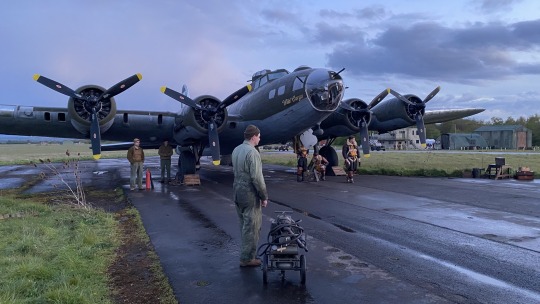

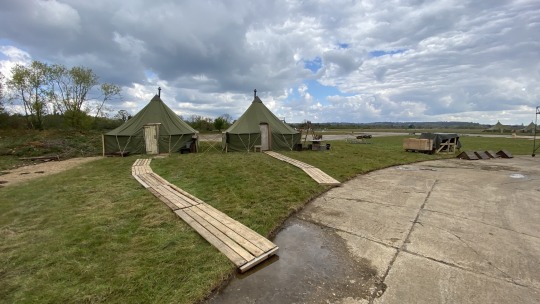
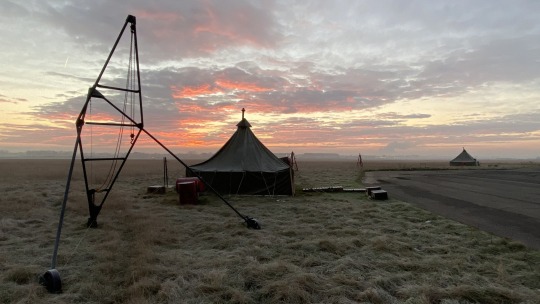
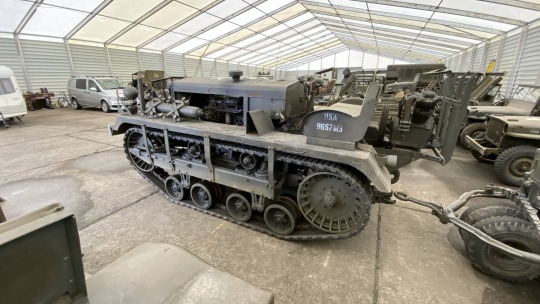

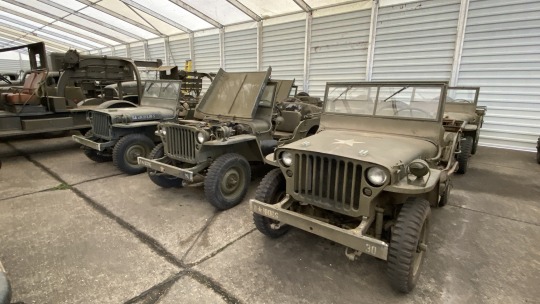

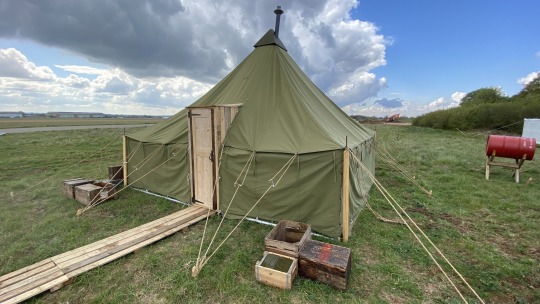

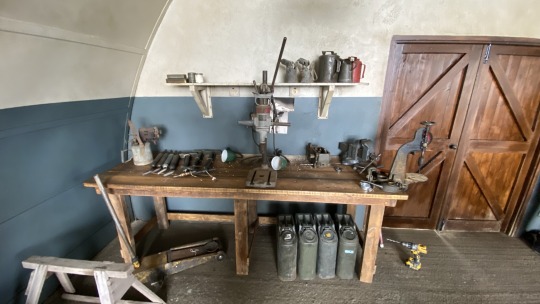
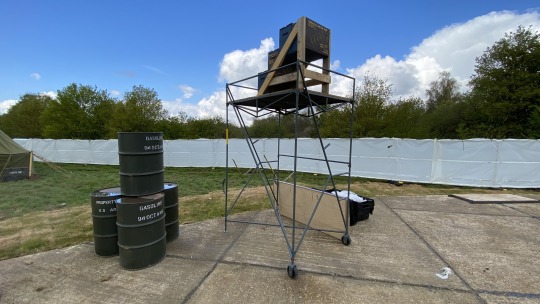
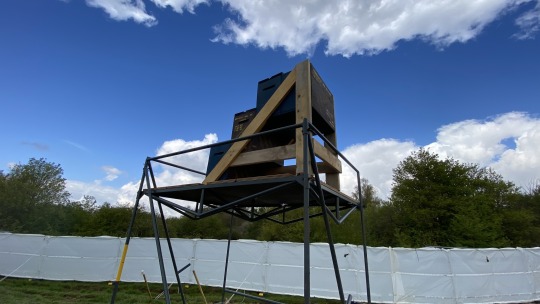

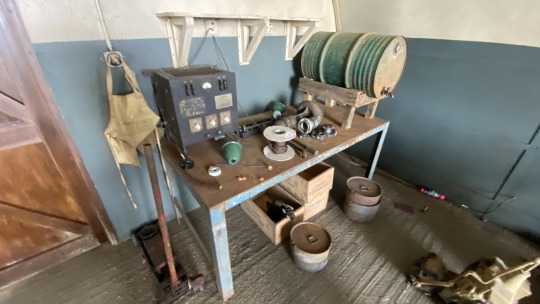
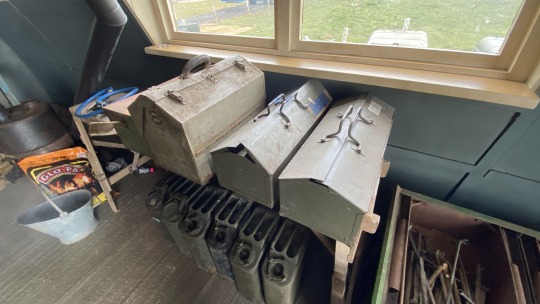
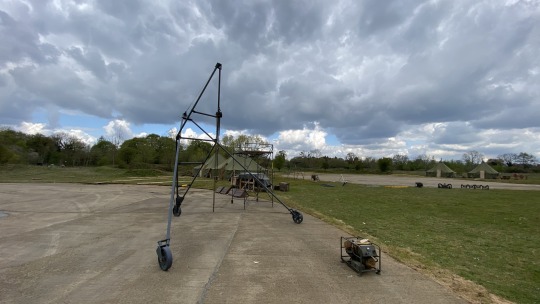
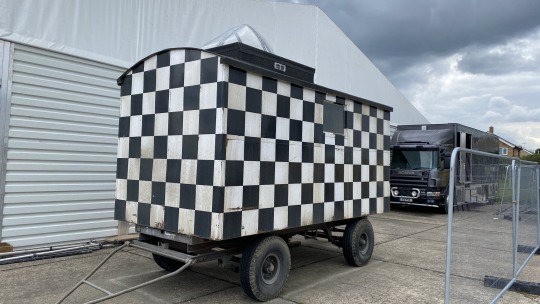
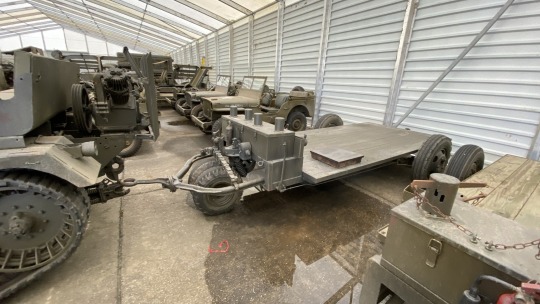


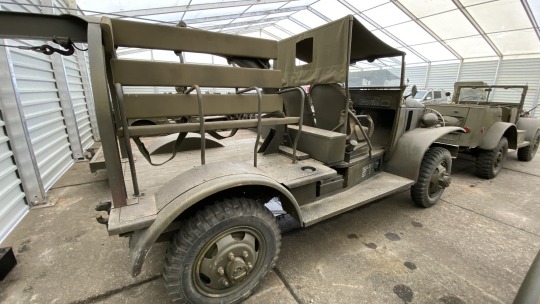

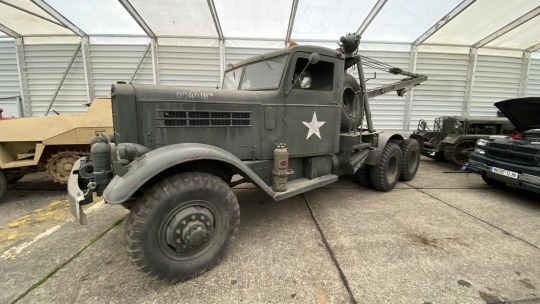
"Master’s of the Air detail. Part 5-Vehicles and Equipment. (part 1)
"When it comes to details the vehicles and ground support equipment really can make a difference. They really did in MOTA in my eyes.
"Ian Hughes supplied the vehicles if I understand it correctly. Ian and his family have a long history supplying vehicles for movie and studio work. I had the opportunity to visit with him at his shop and it was a real treat. He has so many rare vehicles and he is building up more all the time.
"The unsung heroes of a production like this are the folks who take care of the trucks and keep them up and running. No small task for sure. Well done guys. We have several of these big trucks at our museum, so it was fun to talk truck with the guys driving and working on them. More sharp kids!
"One of the things you see in films and still images around the WWII air bases are all the ground and air crew in jeeps, trucks, bicycles and gear all over the place. MOTA did a wonderful job recreating this and it was a delight to see it come to life.
"Not only the vehicles but the equipment that was used to service and support the aircraft were on set. This specialized gear is quite rare and hard to find. Many local collectors and museums rented or loaned out their artifacts to help make the sets look amazing. A production like this can be hard on these kinds of props for sure.
"One story was that two Jeeps were specially prepared for having air crew stand or sit all over them like they did back in the day. The hoods are not that strong, so these two Jeeps had a special frame welded up and installed under the hood to support the actors and protect the original hood. Well, when one seen was shot, guess what Jeep they used? One without the support underneath. Oops!
"When you simply cannot find some of the ground support gear then you have it built. Chris Cull did an incredible job of coming up with so much cool original gear and what he couldn’t find, he had made. The quality of the equipment was first class too. Not cheesy or cheap at all. Incredible Chris. Another Master of Master’s! Except for that blue toolbox! Just kidding…
"Check out the photos and the captions for more of the cool details."
#there's a TON of photos in this post (hence the splitting into parts)#masters of the air#hbo war#behind the scenes#long post
18 notes
·
View notes
Text


"Space Shuttle Endeavour receives a high-flying salute from its sister shuttle, Columbia, atop NASA's Shuttle Carrier Aircraft, shortly after Endeavor’s landing on October 11, 1994, at Edwards, California, to complete mission STS-68. Columbia was being ferried from the Kennedy Space Center, Florida, to Air Force Plant 42, Palmdale, California, where it will undergo six months of inspections, modifications, and systems upgrades. The STS-68 11-day mission was devoted to radar imaging of Earth's geological features with the Space Radar Laboratory. The orbiter is surrounded by equipment and personnel that make up the ground support convoy that services the space vehicles as soon as they land."
Date: October 11, 1994
NASA ID: EC94-42789-4, EC94-42789-5
#STS-68#Space Shuttle#Space Shuttle Endeavour#Endeavour#OV-105#Space Shuttle Columbia#Columbia#OV-102#Orbiter#NASA#Space Shuttle Program#Dryden Flight Research Center#Edwards Air Force Base#California#landing#Boeing 747#747#747 SCA#Shuttle Carrier Aircraft#October#1994#my post
41 notes
·
View notes
Text
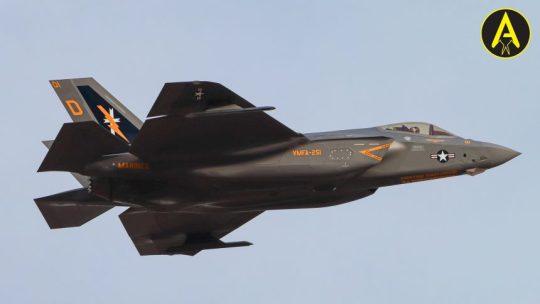
New VMFA-251 Thunderbolts F-35C CAG-Bird Breaks Cover
Take a look at the specially painted aircraft of VMFA-251, the first East Coast operational unit of the U.S. Marine Corps to receive the F-35C.
David Cenciotti
VMFA-251 CAG bird
On Sept. 17, 2024, the U.S. Marine Corps’ Marine Fighter Attack Squadron (VMFA) 251 received its first F-35C Lightning II jet, at Marine Corps Air Station (MCAS) Cherry Point, North Carolina. As we reported in detail back then, the delivery of the first CV (Carrier Variant) Lightning, made VMFA-251 the first U.S. Marine Corps’ East Coast operational F-35C squadron.
Take a look at the specially painted aircraft of VMFA-251, the first East Coast operational unit of the U.S. Marine Corps to receive the F-35C.One-two ‘punch’ for the USMC
VMFA-251 is part of Marine Aircraft Group 14 (MAG-14) within the 2nd Marine Aircraft Wing (MAW 2), the aviation combat element of the 2nd Marine Expeditionary Force (II MEF).
The first aircraft delivered to the unit, BuNo 170501/CF-93, was also elected to be converted into the Thunderbolts CAG-bird and given a fresh new paint scheme to be ready for the ceremony held at MCAS Cherry Point on Dec. 5, to celebrate the reactivation of the squadron following a four-year, seven-month hiatus.
VMFA-251, known as the “Thunderbolts” or “T-Bolts,” was previously deactivated during a ceremony on April 23, 2020, at MCAS Beaufort, South Carolina, after returning from deployment in 2020 in support of Operation Inherent Resolve. The Thunderbolts’ deactivation concluded its 34 years as an F/A-18 Hornet squadron. The squadron was then relocated to MCAS Cherry Point to begin its transition to the F-35.
“Today, almost 83 years to the day after it was founded, VMFA-251 reactivates as an F-35C Lightning II squadron. The T-Bolts are humbled and honored for the privilege of carrying that proud legacy forward,” said Lt. Col. Evan Shockley, commanding officer, VMFA-251 in a public release.
“Our immediate focus is working towards initial operational capability, which means that VMFA-251 has enough operational F-35C Lightning II aircraft, trained pilots, maintainers, and support equipment to self-sustain its mission essential tasks. Following that, we will turn our attention towards reaching full operational capability to ensure that, when called upon, the T-Bolts will stand ready to serve our great nation.”
While the official photos published on the DVIDS website showed the CAG-bird in the hangar where the ceremony was held, a much better look at the special colored aircraft is provided by the images taken by our contributors Gherardo and Victoria Fontana.
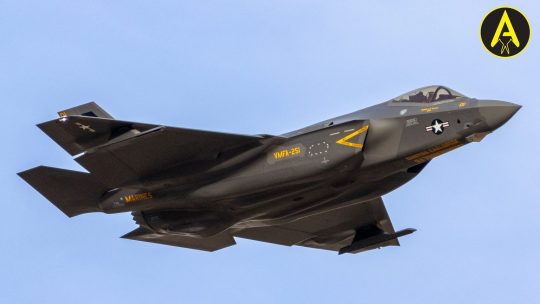
CF-93 / 170501 was delivered to VMFA-251 on Sept. 17, 2024.
In fact, on Dec. 12, 2024, using radio callsign TBOLT 21, the CAG bird flew into NAS JRB Fort Worth for a gas and go. After landing around 14.30 LT, the aircraft remained on the ground for about an hour and a half, and then left for Yuma.
As the images in this article show, the tail includes an orange lightning bolt design over a white cross and black background, markings (including “MARINES”, “VMFA-251”, warning triangles and “JET INTAKE DANGER”), displayed in orange.
The front gear door of aircraft says “THUNDERBOLTS” on left side and “CUSTOS CAELORUM” on the right side in yellow paint. The latter translates from Latin to “Guardians of the Sky”.
The traditional U.S. military roundel is high-visibility and colored white, red, and blue.
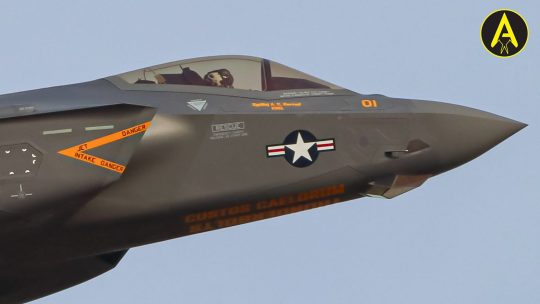
A close up look at the nose of the F-35C VMFA-251 CAG bird.
It’s worth noticing that the CAG-bird is a specially painted aircraft that is officially assigned to the Commanding officer of the Air Wing: every embarked squadron has a CAG-bird that sports modex usually ending with the ’00’ numbers.
One-two ‘punch’ for the USMC
“Today’s arrival of our first carrier-based, fifth-generation fighter-attack aircraft represents an enormous milestone for MAG-14, MCAS Cherry Point, 2nd MAW, and the F-35 community,” said Colonel Benjamin Grant, commanding officer, MAG-14, when the aircraft was delivered to VMFA-251 on Sept. 17, 2024.
The Thunderbolts and the third F-35C unit of the USMC. The other F-35C units, based on the U.S. West Coast, at MCAS Miramar, California, are VMFA-314 and VMFA-311. Overall, VMFA-251 has become the 15th USMC squadron equipped with the F-35, adding to the two other F-35C squadrons and 12 F-35B squadrons.
“The one-two punch provided by the F-35C’s increased range and the F-35B’s STOVL capability will give MAG-14 (Marine Aircraft Group 14) and the MAGTF (Marine Air-Ground Task Force) a significant advantage in the future fight,” added the commander. “I’m proud of the team of Marines and Sailors at MAG-14 and VMFA-251 for their professionalism and dedication, and grateful for our partners in the Marine Corps and the joint force that made today’s event possible.”
“The F-35C Lightning II brings tremendous combat power to 2nd MAW, MAG-14, and MCAS Cherry Point. Its incredible range, firepower, sensors, and survivability, coupled with the fact that it is truly a Joint aircraft, makes it a lethal asset for Marine aviation,” said VMFA-251’s Commanding Officer Lt. Col. Evan Shockleym, who flew the first F-35 to the base. “The T-Bolts of VMFA-251 are excited to accept these aircraft, reactivate the squadron in the coming months, and carry their legacy forward.”
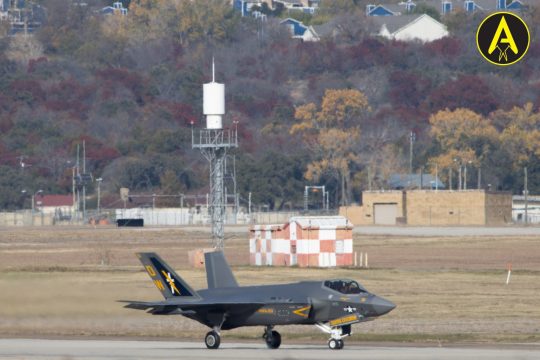
TBOLT 21 after landing at NAS JRB Fort Worth.
The F-35C had its baptism of fire last month, when U.S. Marine Corps F-35Cs, belonging to Marine Fighter Attack Squadron (VMFA) 314, assigned to Carrier Air Wing (CVW) 9 aboard the Nimitz-class aircraft carrier USS Abraham Lincoln (CVN 72), conducted multiple strikes on Houthi weapons storage facilities within Houthi-controlled territories in Yemen on Nov. 9-10, 2024.
The facilities housed conventional weapons, including anti-ship missiles that the Iranian-backed Houthis used to target U.S. and international military and civilian vessels navigating international waters in the Red Sea and Gulf of Aden.
“The F-35C demonstrated its warfighting advantage by transiting contested airspace and striking targets in the heart of Houthi territory over multiple days,” stated Lt. Col. Jeffrey “Wiki” Davis, commanding officer of VMFA-314. “My Marines are honored to be first to fight with the F-35C.”
“The offensive and defensive capabilities of the F-35C absolutely enhance our air wing’s striking arm,” said Capt. Gerald “Dutch” Tritz, commander, CVW 9. “The now battle-tested Air Wing of the Future has proven itself a game changer across all carrier air wing missions.”
@TheAviationist.com
19 notes
·
View notes
Text
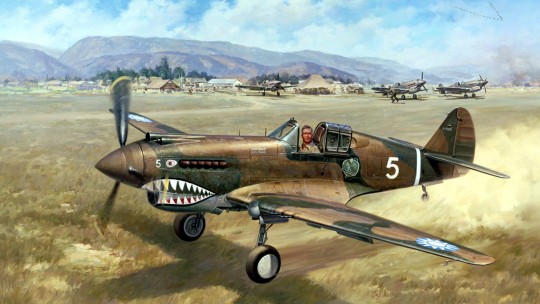
1942 05 04 Alone Above Baoshan - Roy Grinnell
the moment on May 4, 1942, that AVG Flight Leader Charlie Bond races off from the small airfield at Baoshan, at the controls of a Curtiss Tomahawk fighter to single handedly intercept a force of 50 Mitsubishi Ki-21 "Sally" twin engine bombers of the Imperial Japanese Army Air Forces, that were attacking the city of Baoshan. The Burma Road ran through the center of the small city, and at that moment the city was packed with thousands upon thousands of refugees who were desperately fleeing the fall of Burma and the advancing Japanese Army. Apparently the target of the Japanese bombers that day was the Burma Road itself, and denying its use to the Chinese Army, with the tragic result that many thousands of these refugees died under the rain of Japanese bombs and crumbling buildings.As the western flank of General Chennault's carefully built, and usually very effective early warning network had been put out of action by the fall of Burma, the small AVG detachment that Chennault had placed at Baoshan, was caught on the ground by the attack, and with Japanese bombs already falling towards their targets, only Charlie was able to get to his aircraft and get off the ground, and as Roy has captured in his painting, Charlie took to the air without properly securing his parachute harness, seat belts and flying helmet.After a long, climbing pursuit to the southwest, Charlie caught up with the tail-end element of the Japanese bombers and quickly shot down one of the Ki-21's and possibly damaged a second. Unfortunately, Charlie was unaware that the Japanese bombers were being escorted by a chutai (squadron) of Nakajima Ki-43 "Oscar" fighters, three of which broke off, and followed him back to Baoshan. As Charlie flew over the Baoshan airstrip, he executed a perfect "victory roll," but at the top of his rolling maneuver, the three unseen "Oscars" dropped in behind him, and proceeded to blast his Tomahawk out of the sky. Somehow, despite the tremendous damage to his aircraft, Charlie managed to bailout and land safely with only minor burns to his shoulders and the back of his neck. AVG Flight Leader Peter Wright, who along with AVG Flight Leader Ben Foshee were part of a truck convoy that was driving the last of the AVG's equipment and supplies out of Burma, and were driving through Paoshan at the time of the Japanese attack, shared with me during a Second World War Symposium co-sponsored by the Yunnan Municipal Government and the SAAHF in Kunming in 2004, that both he and Foshee saw that the Japanese bombers were being lead by a large, four engine aircraft, that they could not identify. Peter also mentioned that the four engine aircraft appeared to be painted silver With the Japanese occupation of Burma, the Imperial Navy moved a number of their huge, four engine Kawanishi H8K "Emily" flying boats to Burma to support its operations in the India Ocean, and photos from this time suggest that at least some of these H8K's were painted silver. So apparently the large aircraft that Peter and Ben Foshee observed leading the Ki-21's was an Imperial Navy H8K, that was being utilized as a navigation ship.*Peter was very fortunate to have survived the attack on Baoshan that day, as his friend and fellow "Flying Tiger," Ben Foshee was fatally wounded when Japanese bomb fragments slammed into the cap of the truck they were driving.
14 notes
·
View notes